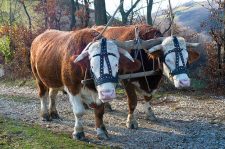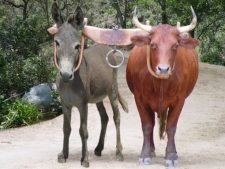by Kristi Holl
Matthew 11:28-30 “Come to Me, all who are weary and heavily laden, and I will give you rest. Take My yoke upon you and learn from Me, for I am gentle and humble in heart, and you will find rest for your souls. For My yoke is easy to bear, and My burden is light.”
Writing in the Yoke
We are invited to get into the yoke with Jesus when we do the writing God has called us to do. Writing this way promises ease and rest for our souls. Until recently, writing with ease and feeling a light burden was not my writing experience. For 35 years, my time-tested, never-fail routine of claim Bible verses about strength, grit teeth, white knuckle it and “just do it!” got me through. Then, last year, my never-fail method stopped working.
 I needed a new working style if my career was going to continue. “Writing in the yoke” was said to be easy with a burden that was light. Could that really be possible?
I needed a new working style if my career was going to continue. “Writing in the yoke” was said to be easy with a burden that was light. Could that really be possible?
At first glance, the invitation to get into the yoke with Jesus seems unworkable. Farmers know that two animals yoked together must be suited to work in unison, as one. If one animal is bigger and stronger than the other, injury or failure is certain. Deuteronomy 22:10 specifically says, “Thou shalt not plow with an ox and an ass together.” They are different animals, both in strength and temperament.
And yet, isn’t that the picture of us when we get into the yoke with Jesus? We certainly aren’t equally powerful. And my donkey temperament can work at cross purposes as well.
A Different Kind of Yoke
In Jerusalem at the time Jesus was speaking, there was a different kind of yoke. It often  did join two unequal animals for a specific purpose; a stronger experienced animal was yoked to a younger inexperienced animal. Yokes were hand-carved to fit the animals perfectly, so the yoke didn’t rub and cause irritation. The older wiser animal taught the younger, weaker animal how to do the work so the animal’s energy lasted and the burden didn’t weigh the smaller animal down. (A perfect description of Matt. 11:28-30.)
did join two unequal animals for a specific purpose; a stronger experienced animal was yoked to a younger inexperienced animal. Yokes were hand-carved to fit the animals perfectly, so the yoke didn’t rub and cause irritation. The older wiser animal taught the younger, weaker animal how to do the work so the animal’s energy lasted and the burden didn’t weigh the smaller animal down. (A perfect description of Matt. 11:28-30.)
So, I began experimenting with a writing method based on those promises of the yoke being easy and the burden light.
Three Types of Days in the Yoke
Writing in the yoke means writing at the pace the Lord sets, because He knows what schedule works best for my health and writing. It is accomplished by responding to the Lord’s gentle tug or inner nudges to begin writing (or to stop).
There is a learning curve to this. Therefore, I have three distinct types of “days in the yoke.” Some days my “stubborn donkey” wants to procrastinate, so ignores the tug to write. I resist the nudges, stiff-legged, and wiggle my way out of the yoke altogether.
Other days my donkey writer over-reacts the opposite direction. When deadlines press, letting Jesus set the pace feels too risky. A gentle steady pace of writing can’t possibly get the work done on time! So I get in the yoke and push and strain to hurry Him along, checking my word count continuously.
Glorious Writing Days
Thankfully, there is a third type of day, which happens more frequently the longer you practice “yoke writing.” These Glorious Writing Days are when I get in the yoke early in the day, then both start and stop writing when I feel the gentle nudges. I don’t clock watch, and I don’t count words till the end of the writing time. Amazingly, the writing gets done (often lots of it!) with no physical pain or emotional stress and strain.
I’m enjoying my experiment with “writing in the yoke.” Slowly but surely, I am changing from a hard-working, exhausted writer to a productive writer who daily enjoys the process. Better late than never!
Instead of writing with pressure and panic, learn to write with ease.@KristiHoll #ACFWBlogs #writingencouragement #ACFWCommunity Share on X Kristi Holl had forty-eight juvenile books published with both Christian and mainstream publishers before deciding to write for adults. When writing her eight published novels for adults, she re-discovered her love for historical mysteries. One of those novels, A Dangerous Tide, features Jane Austen and is housed in Jane Austen’s House Museum in Chawton, England.
Kristi Holl had forty-eight juvenile books published with both Christian and mainstream publishers before deciding to write for adults. When writing her eight published novels for adults, she re-discovered her love for historical mysteries. One of those novels, A Dangerous Tide, features Jane Austen and is housed in Jane Austen’s House Museum in Chawton, England.
